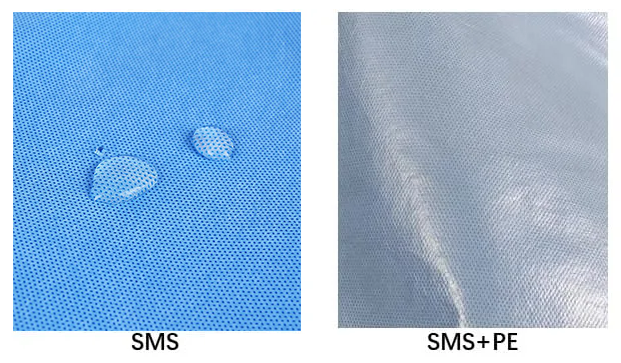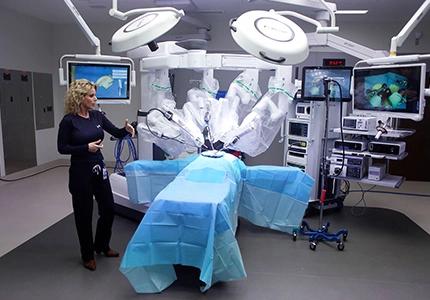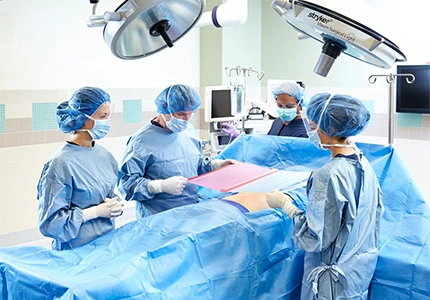Disposable sterile surgical drapes are medical products designed to create a sterile field around the surgical site, thereby minimizing the risk of infection during surgical procedures.Surgical drape is usually consists of SMS non-woven fabric , and different grades of SMS fabric can be with different physical characteristics which is soft, breathable, isolated, blocking virus, anti-liquid penetration and and so on. Especially the features of blocking virus and anti-liquid penetration, it provides an effective barrier against fluids and microorganisms. Some drapes come with adhesive strips to secure them in place and prevent shifting during the procedure, and with Fluid Collection Pouches to keep the liquid from leaking out .Sterile surgical drapes include Ophthalmic surgery drape, Abdominal surgery drape, leg surgery drape, and various sizes and shapes to accommodate different types of surgeries and anatomical locations.And used in a wide range of surgical procedures, including general surgery, orthopedic surgery, cardiovascular surgery, and more.


.png)
Sterility: Sterile surgical drapes are individually packaged and sterilized to ensure that they are free from microorganisms and suitable for use in a sterile surgical environment.
Barrier Function: The primary function of surgical drapes is to act as a physical barrier that prevents microorganisms, dust, and other contaminants from coming into contact with the surgical site and the patient.
Coverage: Surgical drapes are available in various sizes and configurations to cover specific areas of the body or surgical site, ensuring that only the necessary area is exposed during the procedure.
Adhesive or Fenestrated Design: Some surgical drapes feature adhesive edges or fenestrations (openings) that are precisely positioned to allow access to the surgical site while maintaining a sterile field. The adhesive helps secure the drape in place.
Fluid Control: Sterile surgical drapes are designed to absorb or repel fluids, depending on the surgical requirements. This helps keep the surgical field dry and clean.
Fabric: Surgical drapes are typically made from non-woven fabric materials that provide a balance between breathability and barrier properties. The choice of fabric can vary depending on the intended use.
Environmental Considerations: Some disposable surgical drapes are designed to be environmentally friendly, using biodegradable materials or offering recycling options to reduce environmental impact.

SMS (Spunbond-Meltblown-Spunbond) Non-Woven Fabric: This is a multi-layered fabric that combines spunbond and meltblown layers. The spunbond layers provide strength and durability, while the meltblown layer offers excellent filtration and barrier properties.
SMS Fabric with PE Film: A common combination where SMS fabric provides strength and filtration, and the PE film offers fluid resistance.

Medical equipment drape cover,Mayo cover etc

Surgical bed drape, side drape,table drape,top drape,bottom drape etc

Ophthalmic surgery drape, Abdominal surgery drape,C-section surgery drape, leg surgery drape,Brain surgery drape,etc

Perform thorough hand hygiene using an appropriate antiseptic solution, and wear sterile gloves, gown, mask, and other necessary PPE.

Open the sterile package and Use the designated tabs or edges to handle the drape.

Place the drape over the patient, ensuring the fenestration is centered over the surgical site

If the drape has adhesive strips, remove the protective backing and press the adhesive edges around the fenestration to secure it in place.

If the drape includes Fluid Collection Pouches: Ensure any integrated fluid collection pouches are properly positioned to collect and manage surgical fluids.

Conduct a final inspection to ensure the drape is properly positioned, secure, and then Start the operation.